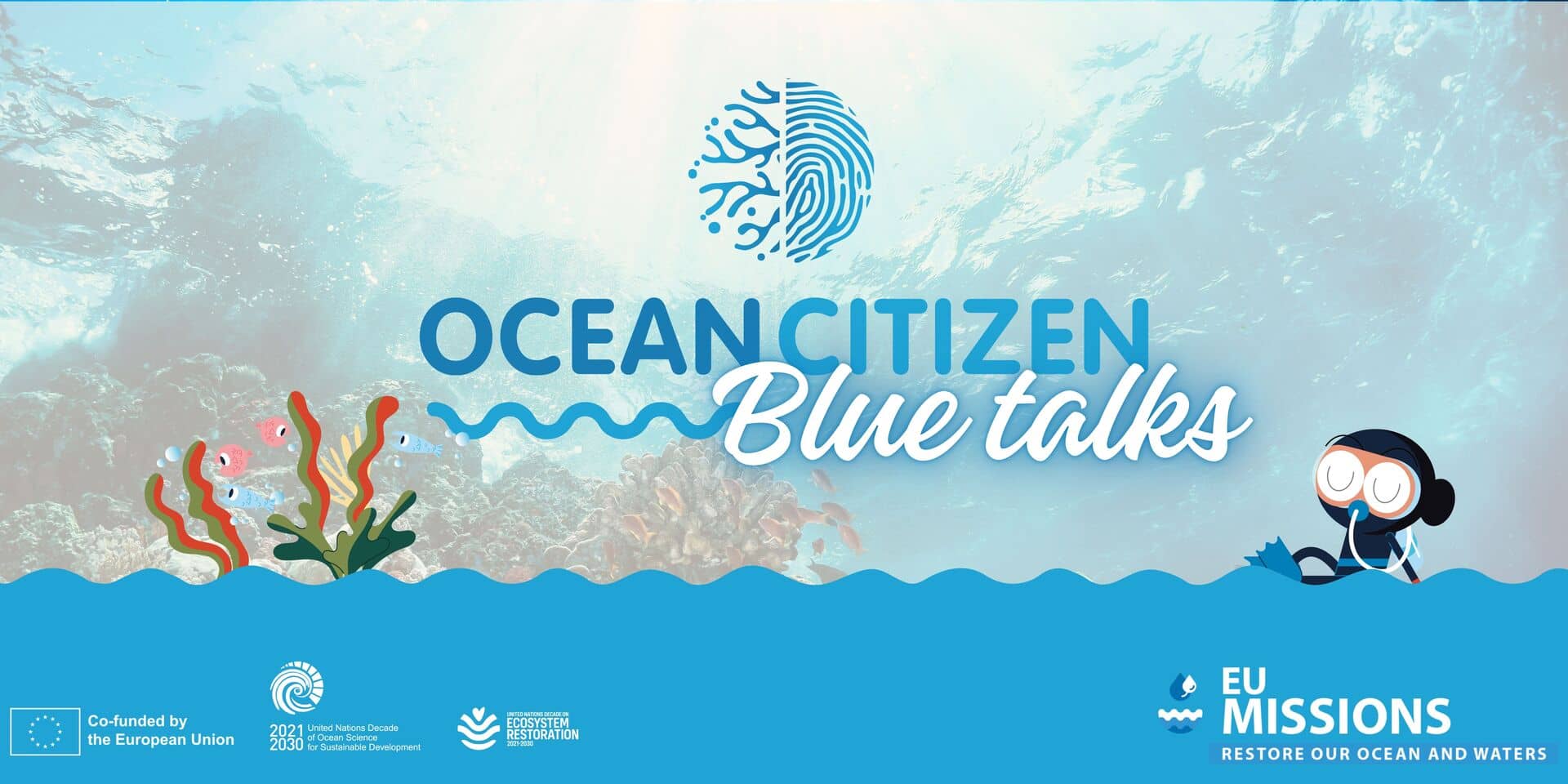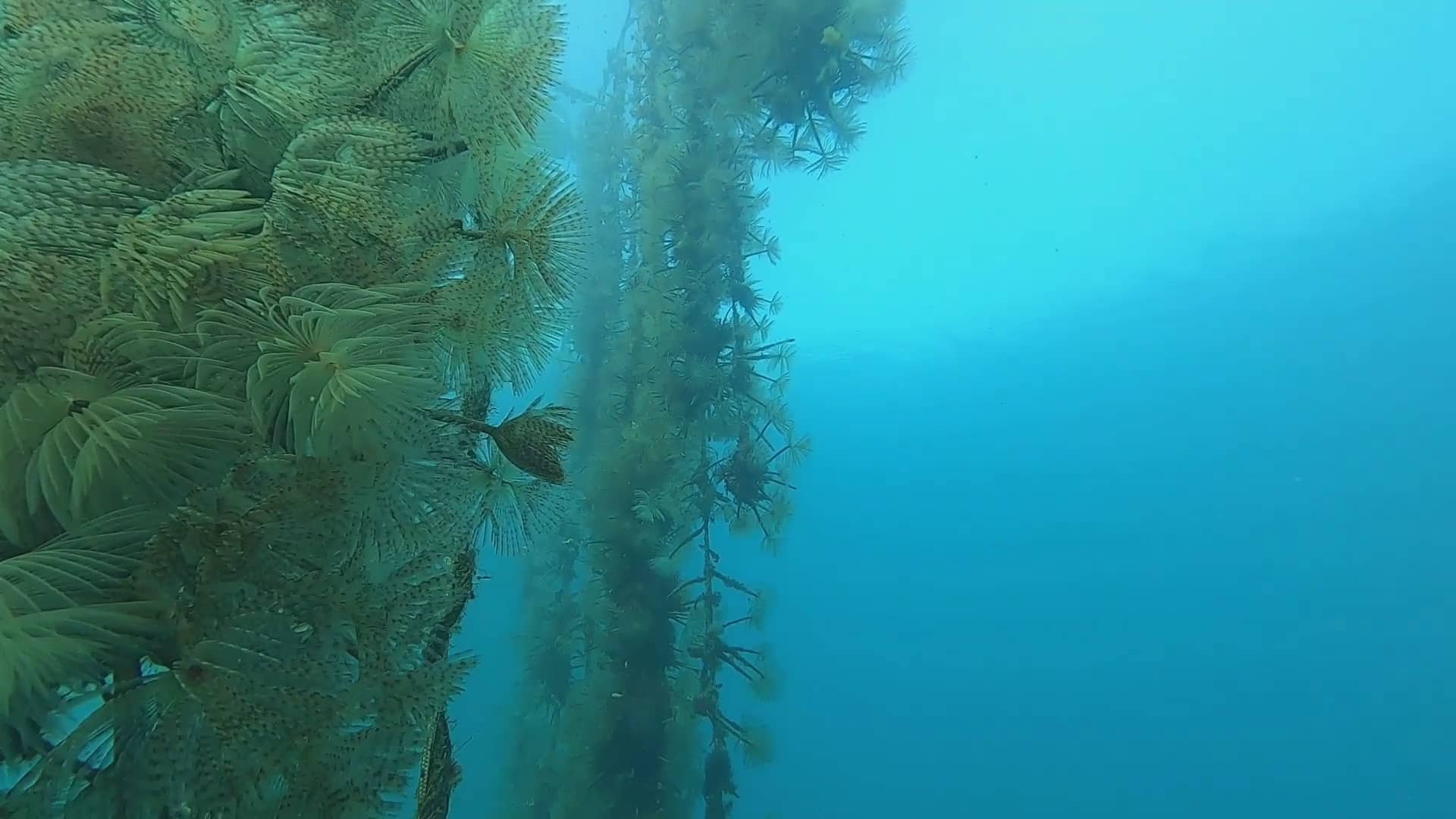Loggerhead turtle (Caretta caretta). Photo credits: Fergal Kirby, University of Galway
In the first half of 2025, several OCEAN CITIZEN partners have carried out field campaigns in the Canary Islands and the Mediterranean. From environmental monitoring in gorgonian restoration sites in Tarragona to the study of canopy-forming algae and benthic fish communities in Tenerife, the project continues to generate valuable data to inform further marine restoration efforts. Here is a summary of the main activities conducted so far this year.
Environmental monitoring in Tarragona (University of Barcelona)
In January and February 2025, the University of Barcelona team began monitoring environmental variables in the gorgonian restoration area of Torredembarra.
Using a CTD (Conductivity, Temperature, Depth), they performed 12 CTD profiles across at different locations, including a shallow rock bar at 14 m depth, the gorgonian restoration site “El Biòtop” at 30 m, and a mesophotic rock bar with a natural gorgonian population at around 50 m. The CTD measured parameters such as temperature, salinity, pH and turbidity across the water column.

SBE 25plus CTD equipped with pH, oxygen, PAR (Photosynthetically active radiation), turbidity, transmission and fluorescence sensors. Photo credits: UB.
By interpolating the data between CTD profiles, it was possible to plot different sections, i.e., vertical representations of a variable along a CTD transect. This ongoing monthly sampling will help characterise the environmental conditions under which restored gorgonians are growing and compare them to those of natural populations throughout the year. In June 2025, the mooring deployed in December 2024 will be recovered, and future analyses will include water filtration to assess the trophic conditions of natural gorgonian populations. These efforts aim to improve our understanding of vertical fluxes, turbidity, and bottom currents in the area.
Assessment of seaweed forests in Tenerife (CONISMA)
Between April 21st and 28th, a research team from CONISMA conducted intertidal fieldwork across several sites in Tenerife to assess the fertility of the canopy-forming alga Gongolaria abies-marina. Monitoring also included measurements of species cover, individual size and herbivore presence. Biodiversity samples were collected to better understand the associated communities and evaluate the natural capital of this key ecosystem. Further fertility assessments are planned as part of upcoming ex situ recruitment restoration efforts at Punta Blanca.

Gongolaria abies-marina. Photo credits: CONISMA
Deep-sea BRUVS campaign in Punta Blanca (University of Galway and Oceana)
From May 18th to 24th, the University of Galway, in collaboration with Oceana, carried out a campaign using BRUVS (Baited Remote Underwater Video Systems), in the Punta Blanca area of Tenerife, Canary Islands. The goal was to collect video footage of benthic fish communities in mesophotic (80 m) and deep (100 m) areas, which are future sites for the deployment of Smart Enhanced Reefs (SER®).
Since the previous BRUVS campaign in September 2023, the UG team redesigned and built four new BRUVS, optimised for the strong currents and depth of these restoration sites. Each BRUVS unit consists of a metal frame, two cameras and a torch attached to the surface with a rope and buoy. Each deployment was placed on the seafloor for one hour, with a bait box filled with crushed sardines to attract marine life. A total of 28 deployments were carried out across four sampling days on Oceana’s vessel Ranger.
Despite challenging weather conditions, the campaign was successful, capturing high-quality footage of a rich fish community, including several ray species and a very curious loggerhead turtle (Caretta caretta). This baseline data will help assess future changes following the SER® installation.
A collaborative effort for marine restoration
These campaigns showcase the range of activities being implemented across OCEAN CITIZEN’s restoration sites. From shallow coastal zones to deep marine habitats, the project continues to build a robust scientific foundation to guide restoration efforts. Further fieldwork is planned in the coming months, and we look forward to sharing more updates soon.




